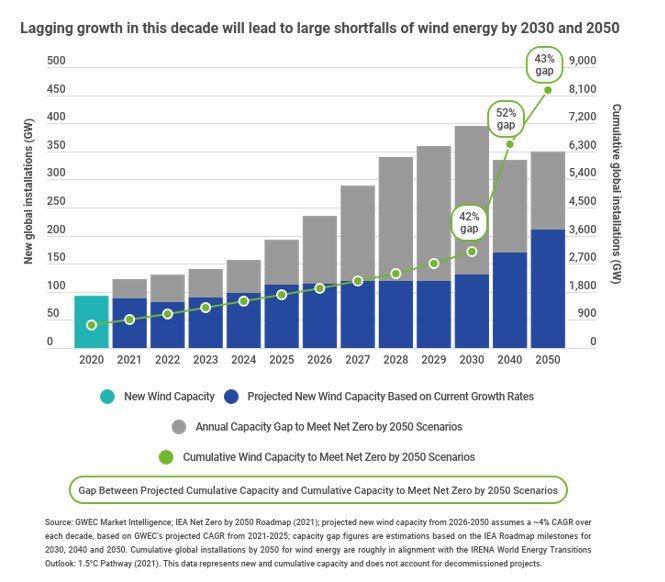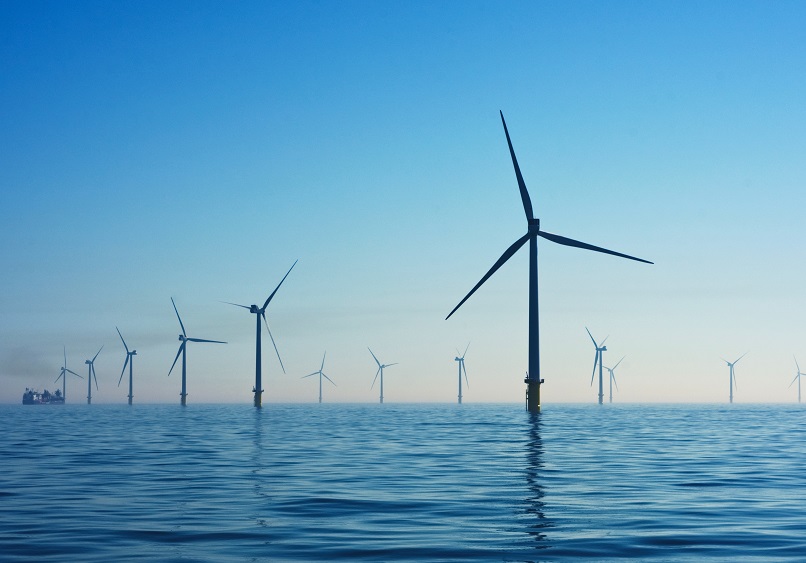World leaders urged to embrace wind energy
Contents |
[edit] Introduction
On 19 July 2021, representatives of the Global Wind Energy Coalition (GWEC) called on G20 members to show leadership in the climate crisis ahead of COP26 by raising national ambitions and urgently laying out plans for increased wind energy production to replace fossil fuels. GWEC is a member-based organisation that represents the wind energy sector.
[edit] Letter to G20 nations
In an open letter to the G20, 23 CEOs from the GWEC acknowledged that some measures to address climate change have been made. But the letter also pointed out that as of July 2021, net zero pledges from G20 countries still put the world on a 2.4°C global warming pathway, well beyond what is needed to avoid the worst impacts of climate change. According to data collected by the organisation, wind energy and renewable installations are falling short of the trajectory needed to meet international climate goals.
The letter was signed by the leaders of some of the largest wind power companies and associations representing the industry in geographies such as the UK, Brazil, China, Mexico and South Africa. The letter mentioned that the roadmap from the International Energy Agency (IEA) showed that annual wind deployment must quadruple from 93 GW in 2020 to 390 GW in 2030 to meet a net zero by 2050 scenario. Both the IEA and International Renewable Energy Agency (IRENA) are aligned in the total wind energy capacity required for a net zero scenario, which is compatible with a 1.5°C warming pathway, foreseeing a need for 8,265 GW and 8,100 GW by 2050, respectively.

|
If current growth rates for wind energy persist, the letter argues that global wind capacity will fall short of the volumes required for carbon neutrality by 2050, with installation shortfalls of as much as 57%.
[edit] Call to action
To reach the necessary level of deployment, the letter called on G20 nations to:
- Raise ambitions for wind power at national level.
- Implement effective policy and regulatory frameworks for procurement and delivery of renewable energy.
- Commit to clean energy infrastructure plans including grids and transmission.
- Agree effective and credible carbon pricing mechanisms.
- Align national and regional finance flows with benchmarks for a net 1.5°C-compliant pathway.
- Develop cohesive and inclusive policies which dedicate public resources to the shift to a net zero economy.
[edit] Lagging adoption
Since 2000, wind energy has increased production exponentially while reducing some of its costs. It has also helped to create jobs and infrastructure investment. As of 2020, there were approximately 550,000 wind energy workers in China, 260,00 in Brazil, 115,000 in the US and 63,000 in India, according to a global survey by GWEC Market Intelligence.
However, the letter stated that achieving the scale and speed of deployment needed to tap into the employment and infrastructure benefits and achieve net zero ambitions is unrealistic under the present "business as usual" conditions. The signatories feel that global net zero goals will not be realistic unless there is decisive and urgent policy change across the G20 countries.
As of 2021, the top five wind markets in terms of total installed capacity were:
- China – 288 GW
- US – 122 GW
- Germany – 63 GW
- India – 39 GW
- Spain – 27 GW
The letter to the G20 heads of state was also shared with a number of government, energy, finance and institutional leaders, including the leaders of COP26, United Nations Framework Convention on Climate Change (UNFCCC), IRENA, IEA, IMF, World Economic Forum (WEF) and a number of development banks.
[edit] Related articles on Designing Buildings Wiki
Featured articles and news
RTPI leader to become new CIOB Chief Executive Officer
Dr Victoria Hills MRTPI, FICE to take over after Caroline Gumble’s departure.
Social and affordable housing, a long term plan for delivery
The “Delivering a Decade of Renewal for Social and Affordable Housing” strategy sets out future path.
A change to adoptive architecture
Effects of global weather warming on architectural detailing, material choice and human interaction.
The proposed publicly owned and backed subsidiary of Homes England, to facilitate new homes.
How big is the problem and what can we do to mitigate the effects?
Overheating guidance and tools for building designers
A number of cool guides to help with the heat.
The UK's Modern Industrial Strategy: A 10 year plan
Previous consultation criticism, current key elements and general support with some persisting reservations.
Building Safety Regulator reforms
New roles, new staff and a new fast track service pave the way for a single construction regulator.
Architectural Technologist CPDs and Communications
CIAT CPD… and how you can do it!
Cooling centres and cool spaces
Managing extreme heat in cities by directing the public to places for heat stress relief and water sources.
Winter gardens: A brief history and warm variations
Extending the season with glass in different forms and terms.
Restoring Great Yarmouth's Winter Gardens
Transforming one of the least sustainable constructions imaginable.
Construction Skills Mission Board launch sector drive
Newly formed government and industry collaboration set strategy for recruiting an additional 100,000 construction workers a year.
New Architects Code comes into effect in September 2025
ARB Architects Code of Conduct and Practice available with ongoing consultation regarding guidance.
Welsh Skills Body (Medr) launches ambitious plan
The new skills body brings together funding and regulation of tertiary education and research for the devolved nation.
Paul Gandy FCIOB announced as next CIOB President
Former Tilbury Douglas CEO takes helm.
UK Infrastructure: A 10 Year Strategy. In brief with reactions
With the National Infrastructure and Service Transformation Authority (NISTA).























